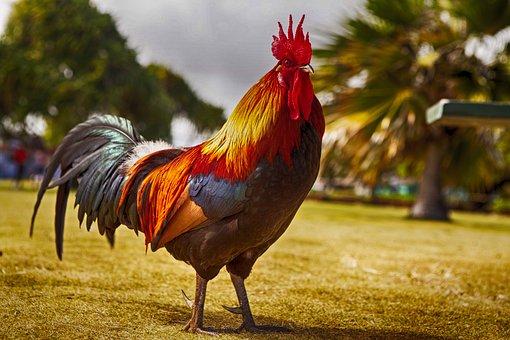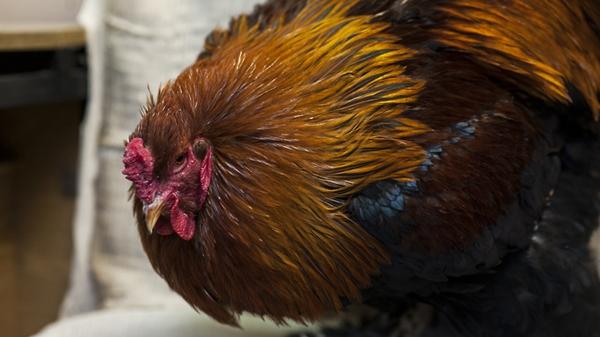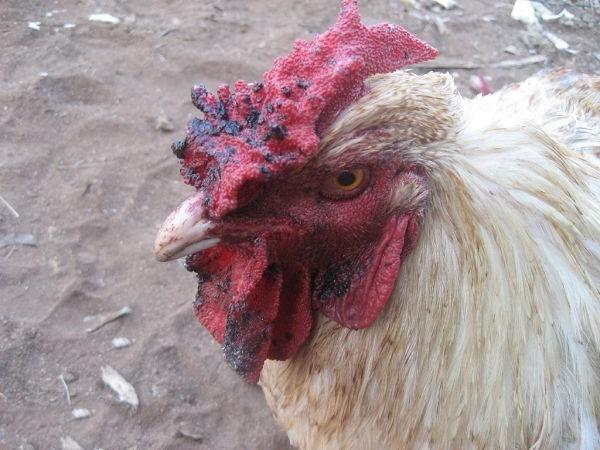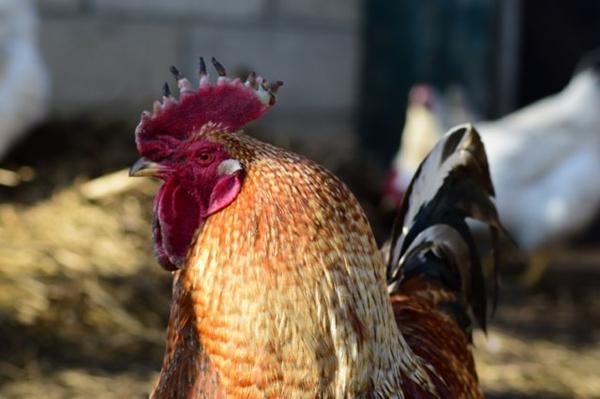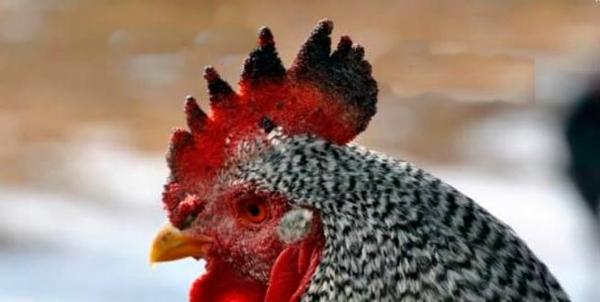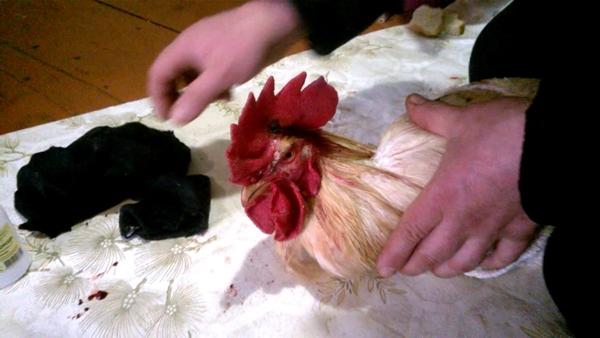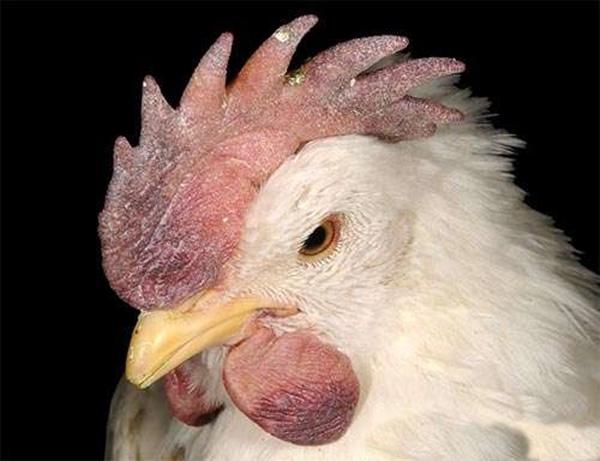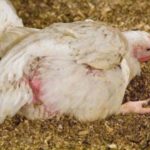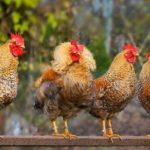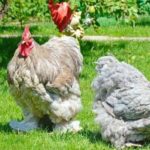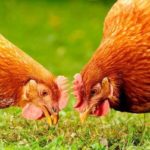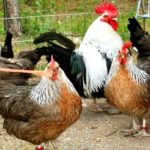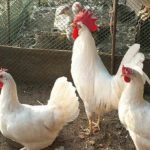What is a village yard without poultry, in particular, the familiar chickens? They are a source of healthy, nutritious meat, eggs, feathers and down. But it happens that recently beautiful, healthy birds have problems - a rooster or hen has dark, black spots on its comb, and it takes on a bluish tint. This could be the beginning of serious problems, so you need to know the causes of color changes, study the symptoms and methods of treating diseases.
- Why does a rooster's comb turn black?
- When to sound the alarm
- Ridge diseases that cause blackening
- Bird flu
- Eimeriosis
- Aflotoxicosis
- Pasteurellosis
- Monocytosis
- Newcastle disease
- Avitaminosis
- Other reasons
- Frostbite
- Pecking and fights
- What to do when the comb is blackened?
- The comb is bleeding
- The comb turned blue
- White coating on the ridge
Why does a rooster's comb turn black?
The change in color of the comb of a rooster and chicken is influenced by various reasons, such as: viral and fungal diseases, the result of mechanical damage (fights and pecking), frostbite, improper, poor diet and lack of vitamins and microelements.
When to sound the alarm
To know exactly why a bird’s comb has turned black, light or blue, it is necessary to observe it and analyze the following factors:
- conditions of detention;
- diet (food) of birds;
- insulation of the chicken coop from external penetration;
- behavior, appearance and well-being of the bird;
- check for injuries and wounds;
- frequency of use of vitamins and dietary supplements.
To prevent the consequences of darkening of the comb from becoming fatal, you need to carefully monitor chickens and roosters. Signs to watch out for: a sharp decrease in egg production, sudden weight loss, constant sleepiness, slowness, problematic bowel movements and discoloration of the comb. In this case, immediate action must be taken to treat or destroy sick birds.
Ridge diseases that cause blackening
Often the reason why the comb turns black is that the bird is infected with a disease. Therefore, you need to know the main symptoms and treatment methods in order to help the birds in time.
Bird flu
This disease affects adults older than 20 days. It affects the gastrointestinal tract and lungs, and occurs only in a severe, acute form. It spreads quickly - the entire herd can become ill in a short time. The disease is incurable, so sick birds are destroyed and the corpses are burned far from the chicken coop.
After this, the chicken coop is disinfected, and healthy birds are given antibiotics with an antiviral effect, such as Interferon.
It is advisable for people with weak immunity not to come into contact with birds - the disease, mutating, is transmitted to humans.
Signs of the disease:
- visible darkening of the comb, as well as earrings;
- birds sit all the time, visible lack of activity;
- fever, convulsions;
- staggering, falling when walking, unnatural body position;
- discharge of mucus from the beak and nostrils;
- breathing problems (wheezing);
- constant drowsiness, weakness;
- loose, foaming stool.
Eimeriosis
A disease of poultry caused by parasites. With it, chickens and roosters experience lameness, the combs become bluish in color or, on the contrary, become lighter, the limbs swell, the heart function is disrupted, and small ulcers appear on the mucous membrane.
To treat the disease, antiparasitic drugs are used, complex vitamins, micro- and macroelements are added to the diet in an accessible, easily digestible form. Sick birds are isolated in a clean, dry, bright room with good ventilation. With proper treatment, a high percentage of recovery is observed.
Aflotoxicosis
A change in the color of the comb can be caused by aflotoxicosis, a fungal disease of birds. With it, the shine of the plumage of chickens and roosters disappears (becomes dull), the combs turn black, the earrings acquire a bluish tint, the birds become lethargic and sleepy. For treatment, antifungal complex drugs are used, the chicken coop is disinfected, and the litter is burned.
Pasteurellosis
When affected by this bacterial disease, large, dark, sometimes simply black or bluish spots appear on the rooster's comb.Roosters and hens lose their appetite, have difficulty breathing, become constantly thirsty, and their droppings become green.
Sick birds are first of all isolated, if they are severely affected, they are destroyed, the chicken coop is disinfected, and the bedding is burned. Afterwards treatment is carried out with antibiotics, in particular Tetracycline or Norsulfazole. For prevention, chickens are vaccinated with anti-cholera serum.
Monocytosis
Other names for this viral disease are blue comb or infectious enteritis. The chickens lose their appetite, severe diarrhea begins, the comb and earrings become bluish and wrinkle. For treatment, potent antiviral antibiotics and multivitamin complexes are used.
Newcastle disease
A viral disease affecting poultry. Also known as: "pseudo-plague" or "Asian plague". When affected, chickens and roosters experience blueness and spots on the comb, paralysis of the limbs, diarrhea and discharge from the beak, poor coordination when walking, cough and fever up to +44 C degrees.
The disease is symptomatically similar to bird flu and cholera, and young animals are most susceptible to it. During an outbreak of the disease, there is a massive death toll of poultry, and there are no effective treatments. To prevent the epidemic, universal vaccination is carried out at a young age.
Avitaminosis
It occurs when there is a lack of vitamins, nutrients and minerals in the diet of roosters and hens, as well as a lack of natural, natural nutrition. With vitamin deficiency, body weight decreases, feathers fall out in birds, joints swell, and a lethargic state is observed. The comb, as well as the earrings, become dark or lightish in color.
It appears when the diet is poor and kept in closed, poorly ventilated areas.For treatment, multivitamin complexes, dietary supplements and plant food are used.
Other reasons
The comb may change color and become stained due to other reasons, such as injuries received during fights, pecking or frostbite.
Frostbite
Often, when kept in a cold, freezing coop, birds develop black spots on the comb (most often on the teeth).
To prevent frostbite, especially in areas with harsh winters, chicken coops are carefully insulated.
In affected birds, the affected areas are treated with alcohol, and then lubricated with Vaseline or fat. The use of special ointments, such as Caring Milkmaid, has proven itself well. Until recovery, chickens are kept in a warm, heated room.
Pecking and fights
Starting from the third month of life, young cockerels begin to show aggression towards each other, fighting for leadership. This is a necessary life experience for them, but during fights in adult roosters, serious injuries and injuries (including to the comb) are not uncommon.
With a small exercise yard, there is a danger of pecking - causing damage to each other and even cases of cannibalism. To prevent fights, the following balance is maintained in the herd - 1 rooster per 10-15 hens. And in case of wounds, they are doused with hydrogen peroxide, wiped with alcohol, and the bird is placed in a separate room until recovery.
What to do when the comb is blackened?
When the comb turns black, first of all, the bird is examined for damage and injury, and its general condition is also visually assessed. If outwardly everything is normal, and the chickens receive regular, nutritious food and vitamin supplements, then vitamin deficiency can be excluded.
Then the cause of the discoloration of the comb will most likely be a disease. This is symptomatic of the behavior and well-being of the bird - it must be isolated and observed.
The best solution would be to seek help from a veterinarian.
The comb is bleeding
In the vast majority of cases, a bleeding, injured comb means that the rooster was “sorting things out” with another male. The injured bird is placed in a separate room until it recovers, and the wounds are washed with potassium permanganate, removing all the blood, and then lubricated with brilliant green or alcohol. You can use a healing ointment, such as Rescuer.
The comb turned blue
A blue crest indicates that the bird is most likely seriously ill. It turns blue when chickens and roosters are affected by bird flu, Newcastle disease and others. An urgent visit to a specialist is required, and after the veterinarian’s diagnosis, the sick bird is treated or destroyed and the chicken coop is disinfected.
White coating on the ridge
Often, poultry owners cannot understand why a seemingly healthy chicken has a pale comb? A white coating on the comb, gradually spreading to the earrings, is nothing more than a scab infection. A sick bird becomes lethargic, feels unwell and loses its appetite.
The disease is not difficult to cure - the affected areas are lubricated with glycerin mixed with iodine, and vitamins and antifungal drugs are introduced into the diet. The chicken coop is thoroughly cleaned and disinfected.


